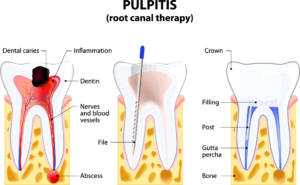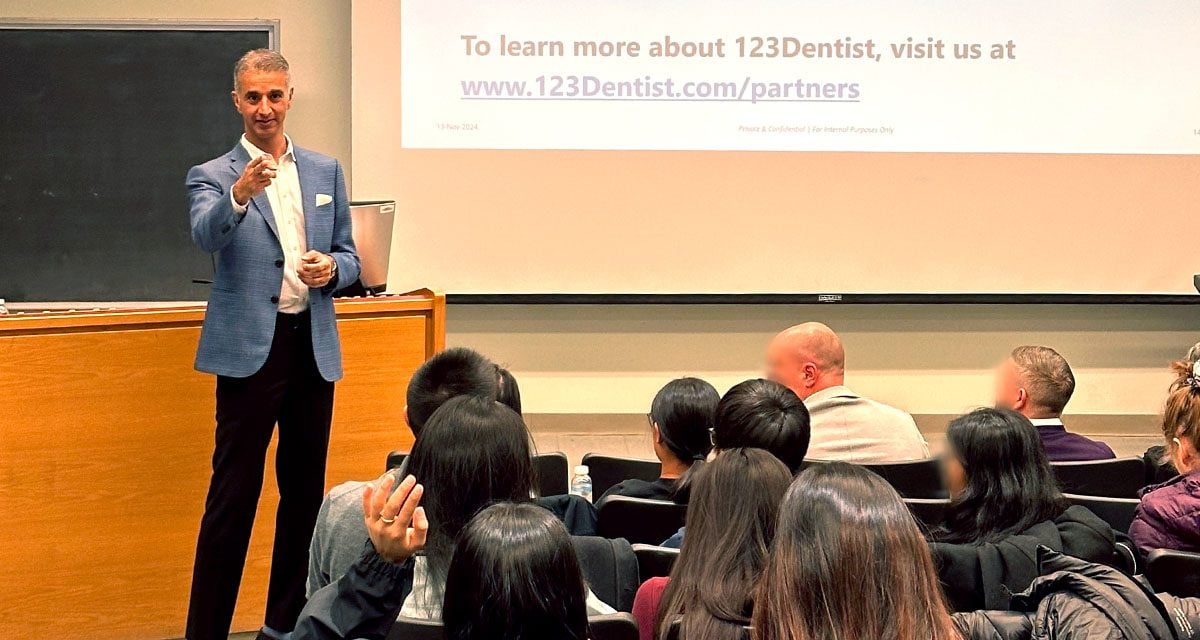Finding out that you need root canal therapy can bring on a variety of emotions. You will likely feel worried or anxious about the upcoming treatment, especially if you are unsure of what to expect. Many people also feel concerned about how much pain they’ll be in following the procedure. Understanding what is involved in root canal therapy can ease some of these concerns you might be having.
Why Do I Need a Root Canal?
Root canal therapy is the most common course of treatment when the pulp or the nerve of your tooth becomes inflamed and infected. This can occur because of a crack or break in the tooth, dental decay, or another type of injury to your tooth. You might notice some warning signs of inflamed and infected teeth, such as pain ranging from mild to severe, sensitivity to cold or hot liquids, or tender, swollen areas of your gums. A dentist can determine whether a root canal treatment is the right course of action for your situation.
Infection and inflammation of the teeth and surrounding tissues can lead to a number of problems. Examples include bone loss around the tip of the root, swelling in the face, head, and neck, and drainage that can extend outward from the root of the tooth. Infection can also spread to other areas of the body, such as the heart and lungs, which can be dangerous or even fatal.
The Process of Root Canal Therapy

Before starting, you will receive a shot of numbing medication to completely deaden the nerves in your mouth. Your dentist also places numbing jelly on your gums prior to injecting the numbing medication to reduce sensitivity when giving the shot. During the procedure, the first step is removing the damaged tooth. The dentist will use a drill to remove the nerve and pulp around your tooth as well.
Pulp sits beneath the hard layer of dentin on your tooth. It contains nerves, blood vessels, and connective tissue, creating the hard tissues of your teeth as they developed. The pulp of your teeth extends from the tip of the roots to the crown, but it can be safely removed after the teeth have fully matured. Your tooth can survive on its own without pulp, making root canal therapy a good option when you have inflammation or infection that is impacting the health of your mouth.
Root Canal Pain
The most common question among patients who find out they need root canal therapy is, “how much will this hurt?” Dental surgeries and procedures can cause a lot of stress and worry, especially for first-time patients. However, the goal of your dentist or endodontist is to make the procedure as comfortable and pain-free as possible. The local anesthetic used to numb your mouth will ensure that you don’t feel any of the drilling during the procedure. Applying the numbing jelly also reduces the discomfort when your dentist or endodontist injects the medication.
Some patients elect to be sedated for the procedure. Dental sedation involves several techniques used to relax a patient and prepare them for various dental procedures, including root canals. Nitrous oxide is especially common in dental offices, although other options are available as well.
You will have to keep your mouth open for up to several hours, which can cause some jaw soreness and stiffness. A dental dam will be placed around the affected tooth, helping to keep the area clean and easy to access. You may also receive a rubber block that can help hold your jaw open more comfortably. You could feel some sensitivity or tenderness in the area for a few days after the procedure. Depending on the severity of your treatment, your dentist or endodontist may prescribe pain medication, although most patients can control their pain with over-the-counter pain relievers.
What to Expect After the Procedure
If you continue to feel pain or discomfort, talk to your endodontist. An instrument could have caused some damage to the surrounding tissues, causing pain and sensitivity. Avoid biting down on or chewing with the affected tooth until your dentist has completed the final restoration phase. A temporary filling is placed, which is delicate and can break if you bite down too hard. This filling will be replaced with a permanent crown. Continue to brush and floss like normal to keep your mouth clean.
Following the procedure, stick to a diet of soft foods for at least a day or two. Good food options include yogurt, smoothies, milkshakes, pudding, soup, mashed potatoes, and oatmeal. Steer clear of hard, sticky, and crunchy foods. When your mouth is still numb, you could accidentally bite your cheek or tongue, so keep the food on the opposite side of your mouth and eat slowly.
Root canal treatment doesn’t have to cause you fear and worry. Your dentist or endodontist will provide proper pain control and work carefully to save as much of the tooth and pulp as possible while removing the inflamed and infected tissues that are causing you pain.






